#Irish in the American Civil War
Explore tagged Tumblr posts
Text
The Irish Connection: Armagh, Banbridge & Craigavon Voices in the American Civil War
The Irish Connection: Armagh, Banbridge & Craigavon Voices in the American Civil War" delves into the remarkable stories of Irish immigrants who played a significant role in the American Civil War. This captivating exploration highlights the unique experiences and contributions of individuals hailing from Armagh, Banbridge, and Craigavon. From the bustling streets of Armagh to the thriving communities of Banbridge and Craigavon, the Irish diaspora left an indelible mark on one of America's most defining moments. This narrative uncovers the trials, sacrifices, and triumphs of Irish soldiers, illuminating their courage, resilience, and unwavering commitment. Discover the intertwining threads of Irish-American heritage and history as we unveil the untold stories of these valiant men and women who shaped the course of a nation at war.
#American Civil War#Armagh#Banbridge#Craigavon#Voices of the American Civil War#Irish in the American Civil War#Irish immigrants#Irish soldiers#Irish-American heritage#Irish-American history#Civil War veterans#Irish diaspora#Armagh diaspora#Banbridge diaspora#Craigavon diaspora#Irish contributions
1 note
·
View note
Text
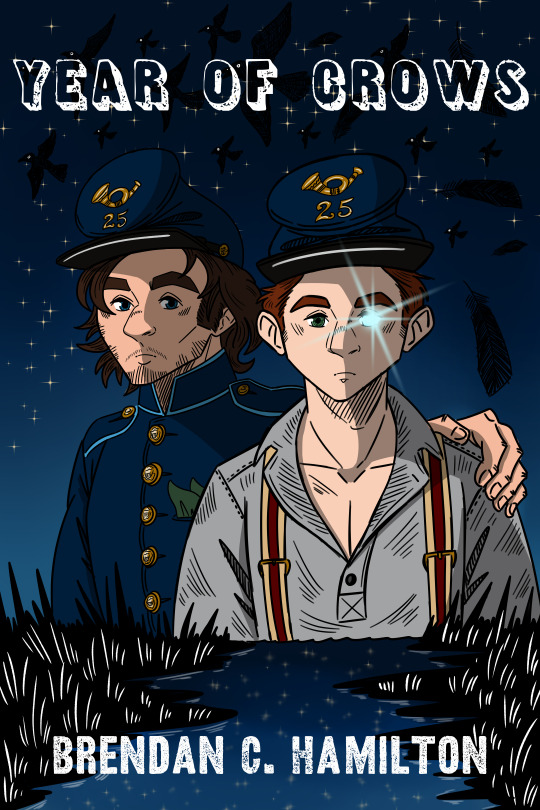
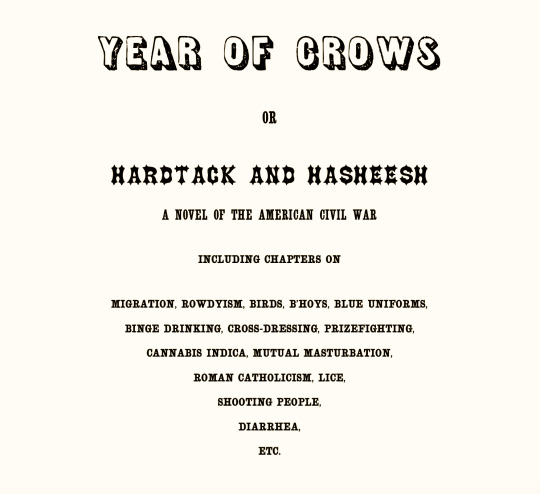
My debut Civil War novel, Year of Crows, is now available in paperback and ebook via Lulu, Amazon Kindle, Apple Books, and wherever fine books are sold. Or "name your price" via PayPal (brendanchamilton[at]gmail) and I'll email you an epub doc directly.
Cover design by Robert L. Kroening.
#american civil war#civil war#1860s#history#historical fiction#book recommendation#novel#lgbt#lgbtq#american#irish#fiction#immigration#war#us civil war
39 notes
·
View notes
Text
#OTD in Irish History | 28 April:
1714 – Sir Wentworth Harman, MP for Lanesborough, ‘coming in a dark night from Chapel-Izod, his coach overturning, tumbled down a precipice, and he dies in consequence of the wounds and bruises he received’. 1794 – The Reverend William Jackson was arrested in Dublin on this day in 1794. Jackson was born in Newtownards, Co Down, but spent much of his early life in England. He was a French spy…

View On WordPress
#EasterRising#irelandinspires#irishhistory#OTD#1916 Easter Rising#28 April#American Civil War#Dáil Eireann#Dublin#Dublin Castle#Eamonn De Valera#England#History#History of Ireland#Ireland#Irish Brigade#Irish History#Irish War of Independence#Thomas Francis Meagher#Today in Irish History
9 notes
·
View notes
Text

Albert was dunking on Confederates and challenging Gender norms before it was cool!
🇺🇸🏳️⚧️🇺🇸
#history#albert cashier#united states#lgbt#irish immigrant#military history#transgender#pride month#american civil war#1800s#transgender history#historical figures#us army#pride#lgbtq#american history#trans man#soilder#united states military#siege of vicksburg#lgbt history#battle of nashville#nickys facts
14 notes
·
View notes
Text
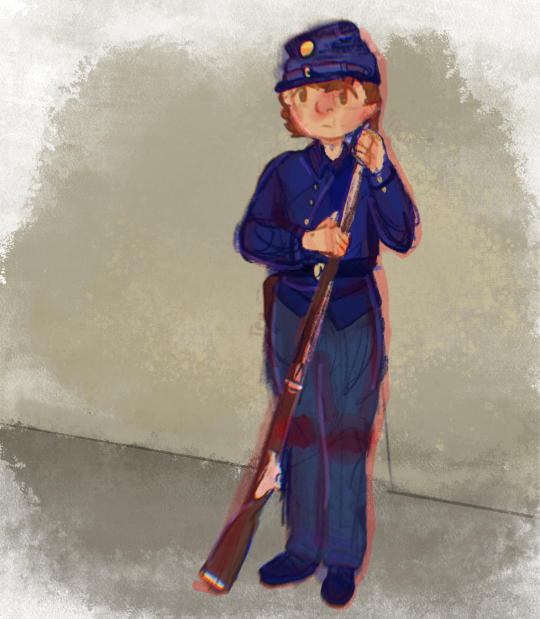

MY BOYY GABRIEL, hes my first ever "offical" Civil war OC.
Irish brigade member, and Patriotic Irishman. Hes super chill and fun, dies during Gettysburg sadly 😭
Did not get to see his Soon-to-be wife and child, or his family. Loved the banjo, and Just being social
#drawingoc#american civil war#acw#historical#historical oc#union soldier#oc#american history#irish brigade#IDK WHAT ELSE TO TAG#history#???
8 notes
·
View notes
Text






#my Spotify is all over the place just like me<3.#my second most listened to artist for example does Irish (American) civil war songs.#i love mika SO MUCH 😭😭🥺.#about me#gtoy
2 notes
·
View notes
Text
my older sister though sunday bloody sunday by u2 was just about a guy having a really bad week
#the education of americans on the irish civil war is pretty abysmal#shelby says#similarly she thought zombie by the cranberries was about a lady having sex with a zombie#idk man her literacy skills ain’t great
2 notes
·
View notes
Text
I should learn tagalog just to really completely confuse white people about my race
#or spanish which would be easier but#people assume im filipino so often#it’d be funny if I just. sold it#committed to the bit#second most common thing people assume I am is latino (no single particular kind just vaguely latino)#being ambiguously mixed is an experience#to be fair though I think it’s more confusing than anything to people to learn that I don’t speak any other languages fluently and my family#is fully just. american#like. as in. the most recent part of my family to immigrate was the german part. back in like. 1900#my family Of Color have literally been here since 1) slavery 2) the dawn of civilization presumably#black side dates back before the civil war (black ancestors fought for the union- one’s honored in dc for it)#native side is. well. native.#I don’t actually know when my grandmom’s family (Irish) came to the states and i kinda wanna ask my mom if she knows about that#cause I’m curious#the German side’s well documented not cause they had a lot of social standing or anything but solely becuaee my great grandfather#was just SO incredibly autistic and scribbled everything down on postcards and shit from notes to letters to (mostly) budgeting and stock#market info#anyway. I think part of why im so often assumed to be Filipino is cause my hair is straight#because white people don’t tend to realize/think about the fact that it could be straightened and not. naturally like this#it’s funny honestly#kibumblabs
4 notes
·
View notes
Text
i just think its really cool to headcanon ennis as having mexican ancestry. i just think its really neat.
#i think he had a great great grandfather who was a mexican born in what is now known as the southwest us during the period when that#territory was annexed into the us after the mexican-american war and i think he grew up in a region that had a bit of american immigration#so he grew up learning english and whatnot#and since mexicans were the og cowboys i think he grew up doing ranch work and was hired to do a cattle drive from tx to#wyoming around the time of the civil war. and then when he got there he met a purdy little irish girl who's family moved to#wyoming following the construction of the railroad in the state#and they met and fell in love and bam#they made little mexican irish catholic babies#then of course they just kinda lost ties to their mexican heritage as the bloodline continued bc that great grandpa was the only ethnically#nonwhite member ofthe family or smth so any connection to that culture disappeared by the time ennis' parent was born (i think its his mom)#and it just becomes one of those things were his mom is like you know we have mexican blood in us right son#its the only way i can reckon with all these hispanic names in the source material lol#'del mar'#'aguirre'#there be hispanics a-foot....#still brokeback posting#brokeback mountain
3 notes
·
View notes
Text
im normal im normal i do NOT get the american civil war and the american war of independence mixed up ok i DONT
2 notes
·
View notes
Text
Abraham Lincoln’s Embrace of Foreign-Born Fighters
Soldiers of the Garibaldi Guard march past a reviewing stand on July 4, 1861, under the gaze of President Abraham Lincoln and General Winfield Scott. (Allen County Public Library Genealogy Center) This article by the noted Lincoln scholar Harold Holzer is from the Winter 2024 issue of Civil War Times magazine. “In the earliest days of Union enlistment in New York City, anyone willing to…

View On WordPress
0 notes
Text

Unidentified private, 9th Infantry Regiment, Company I. Possibly a member of the 9th Massachusetts (Irish) Regiment. Source: USAHEC.
#civil war#american civil war#union#federal#soldier#1860s#boy#history#american#irish#massachusetts#immigrants
23 notes
·
View notes
Text
#OTD in 1861 – The American Civil War began; 150,000 Irishmen would serve with the Union forces, and 40,000 with the Confederacy.
The American Civil War began, a war that would not only pit American against American but also Irish against Irish. An estimated 150,000 Irish fought on the Union side while about 40,000 fought for the confederacy. While the majority fought with the Union, many Irish had a strong antipathy to a northern culture which they perceived as anti-Catholic and Protestant dominated. The most famous Irish…

View On WordPress
#American Civil War#Confederacy#Fighting 69th#General Patrick Cleburne#Irish Brigade#Irish Soldiers#Robert E. Lee#Thomas Meagher#Union
12 notes
·
View notes
Text
Book Review: Days Without End by Sebastian Barry
Author: Sebastian Barry Title: Days Without End Narrator: Aidan Kelly Publication Info: Blackstone Publishing, 2017 Summary/Review: Set in the turbulent United States of the 1850s and 1860s, Days Without End is narrated by an Irish immigrant named Thomas McNulty. Having escaped the great hunger as a teenager, McNulty finds himself in the American West where he befriends fellow Irish immigrant…
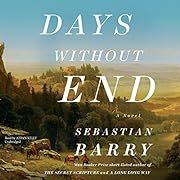
View On WordPress
#American Civil War#Audiobook#Book Reviews#Books#Historical Fiction#Indian Wars#Irish Immigrants#LGBTQ
0 notes
Text
What A Civil War Is And Is Not
The idea for this particular episode was inspired by what’s going on over here in the United States. As I’m sure everyone knows, we had a coup attempt in January and there was a lot of talk of a new civil war and a lot of the traitorous morons who took part in the Jan 6th insurrection claimed they’re looking forward to a civil war and all that crap. And it got me thinking that even though we’re talking about the next civil war, we’re not actually talking about civil wars. What does a civil war mean? What do modern civil wars look like? Etc.
I will warn my listeners that I was an international relations major before I was a historian, so we will be discussing political theory during this blog post, but I’ll try to keep it to brief. I want to quickly define what a civil war is, discuss why they happen and why they’re so violent, and then highlight unique characteristics of a civil war.
What We Mean When We Talk About Civil Wars?
First, what are we talking about when we talk about civil wars?
Like most terms in political science, there are several ways to define a civil war. James Fearon in his article Iraq’s Civil War said a civil war was “a violent conflict within a country fought by organized groups that aim to take power at the center or in a region, or to change government policies.” Stathis N Kalyvas in his book The Logic of Violence in Civil War further refines this definition as “an armed conflict within the boundaries of a recognized sovereign entity between parties subject to a common authority at the outset of the hostilities.” Some scholars such as Ann Hironaka in her book Neverending Wars: The International Community, Weak States, and the Perpetuation of Civil War, add that at least one actor in the war must be the state. Jeremy M. Weinstein complicates the definition further by cataloguing civil wars based on, to paraphrase, whether the actors involved in the war want to capture the center, are fighting over secession, or violence is used but the belligerents have no interest in achieving territorial control of any sort. Other scholars have tried to add a numerical definition i.e., it’s not a civil war less than 1,000 people have died in the conflict and less than 100 people died on average per each year of the conflict.
For the purpose of this episode, we can understand a civil war as an internal conflict in which various actors (one of whom has to be a stand in for the state) shared a common authority and are now in armed conflict over a question of political control. An even simpler, but less academic, definition of a civil war is when the state, society, or portions of society attempts to kill itself in hopes of a new political outcome. When a state responds to a civil threat, it’s attacking its own people, targeting its own territory, and harming its own ability to function economically, politically, and socially. When a non-state actor responds to a civil war, whether they be insurgencies, rebels, whatever we want to call them, they are attacking their own communities, challenging their own government, and coercing or enlisting the help of their own families, friends, or neighbors. It is a war upon the self; however, you want to define the self, and in some cases, can be understood as state or social suicide.
Why do they happen?
Given the extremity of a civil war, why do they happen at all? There are a several theories, but the two most famous are the greed theory, the grievance theory, and the opportunity theory.
The greed theory championed by Paul Collier and Anke Hoeffler in their paper Greed and Grievance in Civil War basically argues that civil wars are caused by a combatant’s desire for self-enrichment and believe that war is the best way to gain control over goods and resources or increase one’s power within a given boundary. They argued that natural resources can contribute to the likelihood of conflict since natural resources, such as oil, can lower the startup costs of war or provide rebels with easy means to extend the war.
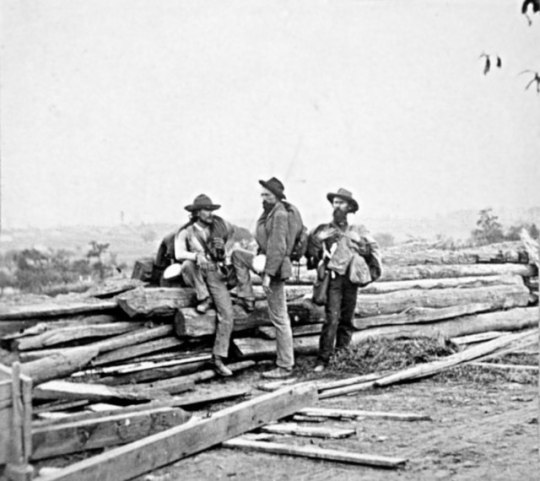
Confederate Soldiers Captured at Gettysburg
[Image Description: A black and white photo of three confederate soldiers resting against multiple, misshapen logs. They are all wearing slouch hats and great, mismatched uniforms along with rolled up blankets. behind them is the clear sky and the hills of Gettysburg]
The grievance theory argues that civil wars are caused by combatant’s sense of grievance against the state or the “other”. Opponents of the greed theory, such a David Keen, argue that greed and grievance are more intertwined than Collier and Hoeffler argue and that they can feed into one another. So really, we should think of it as the greed-grievance theory, where grievance can create opportunities for conflict which creates opportunities to enrich oneself which creates other grievances and so on. In his paper Incentives and disincentives for violence, Keen uses the conflict in Serbia to illustrate how the two feed into each other. Milosevic in Serbia used the media to create grievance amongst the Serbian population and create a common enemy. The elites around Milosevic encourage conditions that warranted international sanctions so they could create a black market where they controlled trade and could loot resources. Milosevic realized that if he ended the conflict, the sanctions would be taken away, and his black-market income would disintegrate. Thus, the stirring of grievances created an opportunity for elite enrichment that proved too precious to end.
The opportunity theory, championed by James Fearon and David Laitin, argues that civil wars likely if there are factors that make it easy for rebels to recruit soldiers and sustain insurgencies. They include poverty, political instability, rough terrain, and large populations as some factors that can increase the likelihood of civil war. Basically, if a state favors an insurgency there’s going to be a civil war.
I tend to agree with Keen that the greed model is too simplistic and even the greed-grievance model is narrow. Like Keen, I think they have to be incorporated into a theory that takes into account several other aspects of conflict generation such as some of the factors Fearon and Laitin identified as well as the perception of state control. All three theories seem to rely on this concept that if the combatants can benefit (whether that be economically, militarily, or politically) then they will risk civil war, but how can a non-state actor benefit if the state itself isn’t perceived as weak in some way? So, there must be a sense of state weakness combined with a sense of something not being gained or given on the part the belligerent actors, a something that was promised (whether as a normal function of the state or through an accepted social/state bias) that can only be gained through armed conflict.
Characteristics of a civil war
Now that we’ve gotten the theory out of the way, I want to spend the rest of the episode talking about common characteristics of civil wars.
Who are the combatants?
When talking about a civil war, the first tell-tale sign that it’s a civil war, are the combatants. Sometimes it can be easy to discern the combatants from each other like in the Irish Civil War, where it was the Free Irish State vs the anti-treaty IRA or the American Civil War where it was the Union versus the Confederates.
Sometimes it gets really complicated like during the Russian Civil War because, not only is it really a bunch of smaller civil wars rolled up into one, but because there isn’t a single point of state authority. You have the Red state versus the White state versus various separatist movements and insurgencies. That’s why I like Jonathan Smele’s book the “Russian” Civil Wars because in reality the only reason we call the civil war a Russian civil war is because all the peoples involved were once part of the Tsarist Empire.
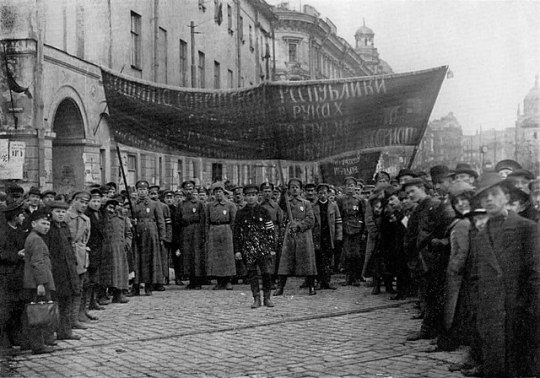
Red Army in Moscow, 1918
[Image Description: A black and white photo of a crowd gathered together in a city square. Two members of the crowd are holding up a banner with Russian writing. They are standing on a brick road. Behind them are several stone buildings.]
If we look at Central Asia, we have Red and White forces battling each other, but we also have fragile semi-states who are also fighting each other whether it be the Tashkent Soviet, the Kokand Autonomy, or the Alash Autonomy or the two remaining emirates: Khiva and Bukhara, plus the Basmachi, a guerrilla movement that wanted to preserve what they deemed to be a proper Islamic society. Then to make matters even more confusing, once the Reds defeated the Whites, they rely on the local state actors to restore order, and with their help overthrow the emirs, but eventually turned on those same state actors, wiping out all they deemed as dangerous and replaced them with state actors of their own choosing. This cannibalization isn’t unusual to see in civil wars and more times than not it occurs amongst the non-state actors. For example, during the Tajik Civil War of 1994, after the Kulob militia were elected to power they turned on an array of rebel groups including the Islamic Renaissance Party of Tajikistan and the Pamirs from Gorno-Badakhshan, which then turned into a nasty bit of ethnic cleansing-which is also common in civil wars.
Identifying combatants can also be complicated because of external interference. We’ll get into this a little later in the episode, but a perfect example of this is the current Syrian Civil War: where Asad’s government is fighting against the various Syrian rebel groups, but the Syrian rebel groups also have to content with Hezbollah, Iranian forces, Russian Forces, and the Islamic State.
Type of Warfare
The type of warfare most commonly seen with civil wars is guerilla warfare or insurgent warfare. Basically, small groups of combatants use tactics such as ambushes, sabotages, raids, hit and run tactics, and petty warfare to attack conventional, less mobile forces. So, Nathaniel Bedford Forrest’s raids during the American Civil War or the Basmachi attacks during the Central Asian Civil Wars.
Often times the insurgents avoid standing battles because they will never win those battles. Instead, they use the terrain to launch hit and run attacks, ambushes, and raids, relying on their small, but highly mobile units to wear the conventional army down.
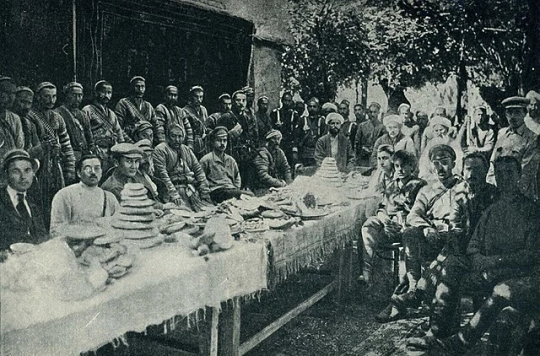
Negotiations between Soviet soldiers and the Basmachi
[Image Description: A black and white photo of a crowd of men sitting and standing around two long tables placed together. Some of the men wear turbans and skullcaps and long robes and long dress shirts while others are wearing the grey shirts and caps of the Bolsheviks. Two clothes are spread across the two tables with several plates of food. The men are sitting in a courtyard with a tree providing shade.]
They’ll also target governmental and military officials as well infrastructure such as supply lines, important governmental or symbolic buildings, and centers of commerce-meaning civilians are also targets. The Provisional IRA turned this into an art as they planted car bombs in large shopping areas. We’ll get into the tricky relationship between insurgents and the population a little later in the blog post, but it should be clear that both the state and the non-state combatants will target civilians when it suits their purposes.
Governments respond by using standard counter-insurgency tactics such as population control i.e., draining the swamp. Expanding zones of control, also known as oil spots, cordon and search operations, winning the hearts and minds of the people, scorch earth tactics, and intelligence operation which includes intelligence gathering, counterintelligence efforts, and assassinations. The Government can also call-in conventional units and tactics such as heavy bombardments, air power, and special forces. Basically, the government doesn’t care how it wins as long as it wins, so it will simultaneously implement conventional tactics and counter-insurgency tactics-sometimes to its own detriment. A good example of this might be the Soviet-Afghan War or the Vietnam War, although those are perfect examples of how extreme external meddling can drastically change the course and duration of your civil war.
I also want to acknowledge that in modern civil wars like in the current Syrian or Yemen Civil wars, governments are growing less and less concern about civilian casualties. While civilian loss is a staple of civil wars, in Syria we’ve seen Assad deploy chemical weapons, which are banned by international law and he has purposely targeted medics and medical infrastructures. Or the purposeful starvation of Yemeni people in their civil war. The accepted “standards” of law are being increasingly abandoned and states are using civil wars to do whatever the hell they want to civilians and rebels with the goal of terrorizing their own people as much as defeating the rebels. This has sort of always been an aspect of civil war, but I would argue that the concept that you need to defeat your own people-even the civilians who are not active-is a new 21st century twist.
Atrocities and violence
Which of course leads us to atrocities. Civil Wars are known for their atrocities and there are hundreds of papers and books studying why civil wars are so violent and bitter and is the violence random or does it follow a pattern, etc. Atrocities always occur in war, but during a conventional war, you’re hurting people who have nothing to do with you. It’s an other, an alien, someone from another country and culture, etc. But with a civil war, no matter how “othered” the enemy becomes, it’s still a neighbor or a family member and so there is this question: why do people get so violent during civil wars? And the disquieting answer is that: the monopoly of power is broken during a civil war. So, in a stable government whether you’re a democracy or a dictatorship, there’s an understanding between government and people: do these things or be these things and the chances of state violence against you will be low.
Now I’ll acknowledge that there is randomized terror, such as the Soviets perfected or any modern-day dictator, but even dictators, or the ones who want to survive, know that there is a balance between being a crazy maniac that people will risk everything to overthrow and the right amount of violence to maintain absolute control. As long as this agreement holds, the state has monopoly over violence. But something happens where this monopoly ends-or it’s perceived to end-and other non-state actors now have the ability to employ violence to maintain control of their areas. And so, violence becomes the new political, economic, or social currency. Kalyvas, in his book the Logic of Violence in Civil War argues that civil war violence isn’t random, it only occurs in disputed territories (where the monopoly of violence is most tenuous) and is driven, not by the conflict itself, but by old rivals and wounds in the population.
Which brings us to another reason why civil wars can be so violent: civil wars exasperate existing tensions. Whether it be class based, race based, or religion based, if there is a problem plaguing your society, a civil war will make it worse. We see this in Central Asia. Take the Tsarist government away and the tensions between the settlers and the indigenous peoples explodes into a conflict, the internal conflicts within the indigenous peoples explodes into various conflicts, the white and red-the supporters of the status economic and political quo and those who want something different-take their conflict into the region. We can see this in Syria with Alawites pitted against the Sunni peoples, the Ismaili as well as against the Kurds and the Druze, and so on. During the Irish Civil War, it wasn’t just an IRA man against an IRA man, one of the main grievances was the influence of the British in the Cosgrave government as well as the reincorporation of the Unionists or loyalist, who didn’t support the IRA during the Irish War of Independence.
So, civil wars are violent, but who is on the receiving end of that violence? It’s mostly civilians which makes sense since the non-state combatant’s best way to survive is to avoid open warfare and the state government has a hard time finding the non-state aggressors. So, who’s caught in the middle? The civilians.
Non-state combatants employ violence to either punish perceived collaborators or enemy agents, to increase the price of continuing the war (i.e., terrify and anger civilians so much by indiscriminate violence that they demand their government end the conflict now), to get revenge/attack “hated” peoples, and/or to extort the population of their support, their people, and/or their resources. Jeremy M. Weinstein, in his book Inside Rebellion: The Politics of Insurgent Violence argues that insurgents that control lands rich in natural resources or are financed by external forces are more likely to commit high levels of indiscriminate violence than those in resource poor regions. Which makes sense. If you need to rely on civilians for support, supplies, and resources, you’re not going to want to anger them whereas if you can just extract your wealth or are being supported by an external force, why care about the people under your care? Then there’s ethnic cleansings/acts of genocide. The Russian Civil War is full of moments were non-state actors would attack their favorite people to hate whether that be the Jewish people of their region, the indigenous people of Central Asia, or just old fashion peasants.
And then there are cases where attacks led to unintended casualties or more civilian casualties than expected. This happened a lot with the Provisional IRA’s bombing campaigns.
The government targets civilians for similar reasons. They want to punish anyone who supports or aids the rebels, they want to increase the price the rebels have to pay to engage in a specific region (ala Sherman when he burned the south), and/or they need to reassert control. Civilian targeting can also be a component of intelligence efforts as they try to take away all support from the rebel groups. Similarly, the state can also engage in ethnic cleansing/acts of genocide. Again, during the Russian Civil War, both the Red and White armies engaged in launching pogroms against their Jewish populations or the bloody work of the Yurchiki during the Tajik Civil War. The Yurchiki was a Russian based unit sent to Tajikistan to assist the government and are responsible for so many atrocities it is rumored even European human rights organizations played them down. And just like an insurgency, the state can also have unintended casualties or more civilian casualties than expected. As I mentioned earlier, in civil wars like Syria, the civilian is purposely and indiscriminating targeted and it’s hard to understand what Assad thinks he’s achieving by targeting hospitals and medics and civilians in pro-Assad regions.
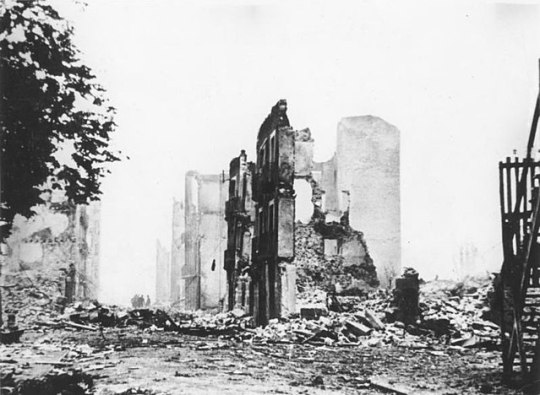
Destroyed remains of Guernica during the Spanish Civil War
[Image Description: A black and white photo of several demolition buildings. Piles of building rubble fill the streets and smoke is thick in the air.]
However, civilians aren’t the only ones who experience atrocities. Soldiers and governmental officials are also common targets which means that they too can be victims of extreme violence. During the Irish Civil War, the anti-treaty IRA assassinates Free State officials such as TD Sean Hales as well as Pro-Treaty family members such as William Cosgrave’s uncle and Kevin O’Higgins’s father. The Fort Pillow massacre during the American Civil War is a prime example of killing prisoners after they’ve surrender, a horrific act of extreme racism, and an attempt to intimidate supporters of the Union. In short, Forrest led an attack on Fort Pillow and won. He massacred 300 African-American soldiers refusing to treat the soldiers as traditional prisoners of war.
Governmental forces are no different. During the Irish Civil War, the Cosgrave administration legally executed 77 prisoners of war while members of the Free State army implemented their own executions. The most famous case being the landmine of Ballyseedy. Nine IRA prisoners were tied to a landmine which was detonated and only one prisoner survived. During the Russian Civil War, the Bolsheviks and the Whites implemented their own Terrors, where they carried out extreme forms of political repression and mass killings. Violence isn’t only physical violence, it can also be the taking and redistribution of property, mass expulsions, and forced conscription of people or food. For example, during the Central Asian Civil Wars, the Jadids and Bolsheviks took all property from the Ulama, breaking their source of power and leaving them homeless and without resources.
External Interference
Like all other wars, external actors love getting involved. A civil war opens your country up to external meddling whether it be financial support, international investigations into the conduct of the war, or military support. In the Irish Civil war, the British government gave artillery to the Free State so they could defeat the anti-treaty IRA troops barricaded in the Four Courts, during the American Civil war, England and France considered supporting the Confederates, during the many civil wars that make up the Russian Civil War, Britain and the United States got involved in all sorts of way, and in the Libyan, Syrian, Yemeni, and every other current civil war, Russia, the United States, and usually Iran are involved.
What does this mean for a civil war? Well, that depends. Sometimes external interference can mean that one or more of the actors are recognized as legitimate. It can pressure the state to find peace or it can empower the state to keep fighting. Often times external actors can muddle a civil war, they can extend a civil war, and they can turn civil wars into proxy wars, like the Soviets in Afghanistan, the United States in Vietnam or Korea, or the Russians ever growing presence in Syria. Syria is not quite that bad yet, but Russia is heavily involved and can serve as a stand in for state power in many different ways. External actors can also feed into rebel’s worst natures. For example, if they make a rebel group financial independent, then we may see rebel groups engage in indiscriminate violence.
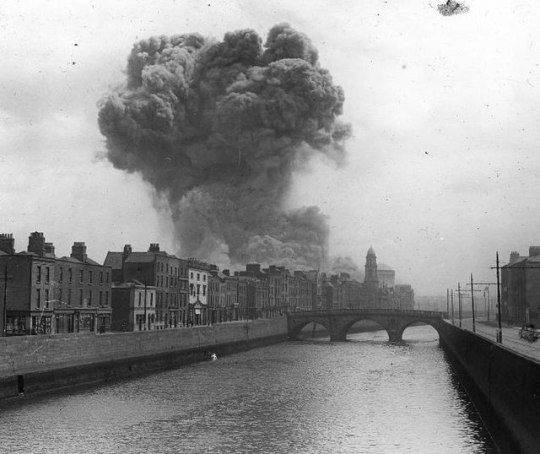
The Provisional Government bombing the Four Courts, using ammunition supplied by the British
[Image Description: A black and white picture of a river and the streets on either side of the river. The river is calm. The streets are mostly empty and there are several buildings on each side. A stone bridge ran across the river, connecting the two streets. A large grey and white cloud billows in the distance, taking up most of the sky.]
And finally, civil wars are great ways for most powerful states to experiment with new systems and tools of warfare without technically being in a war themselves. The most famous example of this, of course, is the Spanish Civil War which the Nazis and Soviets turned into their own experiment lab for tactics and weapons they’d used during WWII. And I think we’re seeing some of this in Syria, Yemen, and even the current Ukraine conflict which is a weird hybrid civil war of sorts.
Long-lasting Effects
One of the most damaging characteristics of a civil war is the long-last effects. Because a civil war is so violent, because the people themselves are the target, and because it can invite outside intervention, civil wars rarely end when the fighting stops. Civil Wars change entire physical and political landscapes. Civil Wars can ruin farmland which may lead to mass starvation that can last for years if not decades, can eliminate industrial capabilities, and can redistribute control over resources and economies.
Civil Wars can overthrow the ruling powers but can also enrich them and strengthen their hold. They can fundamentally change how people understand their political systems or they can enforce existing structures including inequalities. Civil Wars exasperate social and economic tensions within a sovereign entity and I don’t think a Civil War has ever made them better. They’ve only made them worse, which can contribute to future conflicts or ethnic cleansings.
Civil Wars can change international politics, making certain states more reliant on others, weakening external actors in surprising ways, and pulling entire regions into a death spiral of civil wars and interstate wars.
Civil Wars can wipe out entire peoples and their culture, fundamentally reshaping a nation’s demographic and identity. They also create massive refugee and humanitarian aid crises. And even if the surviving authority maintains to weather all of these long-lasting effects the trauma their society has endured does not end. It gets passed down each generation and can become a festering wound that may not kill the state, but can weaken it.
In his book, the Logic of Violence in Civil War Kalyvas writes this fascinating passage:
“This book introduces a different mechanism for mapping national-level cleavages onto the local level, one that is consistent with the observed disjunction between center and periphery: the mechanism of alliance entails an exchange between local and supralocal actors, whereby the latter offer the former military muscle so that they can prevail in local conflicts; in return, local actors supply central ones with essential local resources that help them wage the war. Myriads of local conflicts are thus linked to the overarching conflict of the civil war – its “master cleavage.” Seen from this perspective civil war is, at its core, a process of integration and state building.” - Stathis N. Kalyvas, The Logic of Violence in Civil War, pg. 14
Basically he’s talking about the relationship between the actors at the center and local actors and, how even though local actors engage in violence at contested locations and usually engage only to settle old scores and for local political reason, the act of violence is dependent on the central and local actors working together and thus shapes the direction of the war, often times reshaping boundaries, even if they’re just local boundaries, and thus it becomes an act of statecraft and integration.
It’s probably no surprise but the idea of civil war as a tool of state building fascinates me. I love to study asymmetrical conflicts at the point where non-state belligerent actors must transition from warfare to statecraft and we’ll actually be discussing that process in this current season because that’s exactly what the Bolsheviks and Jadids have to do during the civil war. And it’s something we’ll return to when we cover the Irish Civil War. But this concept of civil war equals state building is fascinating because I think we often think of civil wars as inherently destructive and terrible things, which they are. Just go back to our discuss about the atrocities committed during civil wars if you need to confirm that they are indeed terrible. But it’s also interesting to think of the ways that new institutions and centers of power are crafted by civil wars and if we focus on the few productive things that can come out of civil wars, then can we find a way to resolve them, not only quicker, but in a more peaceful and long-lasting way. Or can we at least craft tools that either the state itself or the international community can put in place to prevent civil wars from becoming destructive, violent, suicidal conflicts?
This idea reminds me of one of my favorite passages from Tadeusz Konwicki’s book a Minor Apocalypse, “the world can’t die. Many generations have thought the world was dying. But it was only their world which was dying.”
Resources
Iraq’s Civil War by James Fearon
The Logic of Violence in Civil War by Stathis N. Kalyvas
Neverending Wars: The International Community, Weak States, and the Perpetuation of Civil War by Ann Hironaka
Greed and Grievance in Civil War by Paul Collier and Anke Hoeffler
Incentives and disincentives for violence by Dan Keen
Ethnicity, Insurgency, and Civil War by James Fearon and David Laitin
Inside Rebellion: the Politics of Insurgent Violence by Jeremy M. Weinstein
A Minor Apocalypse by Tadeusz Konwicki
Strategy by B. H. Liddell Hart
Learning to Eat Soup with a Knife by John A. Nagl
The Russian Civil Wars 1916-1926 by Jonathan Smele
Destroying a Nation by Nikolaos van Dam
Syria After the Uprising by Joseph Daher
The Soviet-Afghan War: How a Superpower Fought and Lost by the Russian General Staff
The Hidden War by Artyom Borovik
Russia in Flame: War, Revolution, Civil War, 1914-1921 by Laura Engelstein
Imperial Apocalypse: the Great War and the Destruction of the Russian Empire by Joshua A Sanborn
A Nation and not a Rabble: the Irish Revolution 1913-1923 by Diarmaid Ferriter
Judging W. T. Cosgrave: the Foundation of the Irish State by Michael Laffan
Say Nothing: a True Story of Murder and Memory in Northern Ireland by Patrick Radden Keefe
Making Uzbekistan: Nation, Empire, and Revolution in Early USSR by Adeeb Khalid
Green Against Green by Michael Hopkinson
#history blog#civil wars#irish civil war#american civil war#spanish civil war#central asian civil wars#russian civil war#asymmetrical warfare#queer historian#activating political science powers#Spotify
0 notes
Text
The Emerald Enigma: Unraveling Deadeye's Disguise - A Historic Civil War Mystery
In "The Emerald Enigma: Unraveling Deadeye's Disguise - A Historic Civil War Mystery," delves into the captivating world of Irish soldiers in the American Civil War. Amidst the chaos of battle, a peculiar figure emerges known as Deadeye, a skilled marksman with a secret past. As suspicions grow, an intrepid detective, driven by curiosity and justice, embarks on a perilous journey to expose Deadeye's true identity. Set against the backdrop of war-torn America, this enthralling historical mystery takes readers on a thrilling rollercoaster of intrigue, espionage, and unexpected alliances. Prepare to unravel the enigma of Deadeye's disguise as the past and present collide in a quest for truth.
#Dead Eye In Drag#Mystery Solved#Irish In The Civil War#Historical Mystery#CivilWar Detective#Irish American History#Undercover Investigation#Intrigue And Betrayal#Military Espionage#Dual Identities#Union Army#Confederate Spy#Irish Heritage#Secrets Unveiled#War Time Intrigue#Historical Fiction#Mysterious Past#Code breakers#Unmasking The Truth#Action And Suspense
0 notes